第71章 IV(4)
I can therefore see a large significance in the somewhat bold language of Burdach : "There is for me but one miracle, that of infinite existence, and but one mystery, the manner in which the finite proceeds from the infinite. So soon as we recognize this incomprehensible act as the general and primordial miracle, of which our reason perceives the necessity, but the manner of which our intelligence cannot grasp, so soon as we contemplate the nature known to us by experience in this light, there is for us no other impenetrable miracle or mystery."
Let us turn to a branch of knowledge which deals with certainties up to the limit of the senses, and is involved in no speculations beyond them. In certain points of view, HUMAN ANATOMY may be considered an almost exhausted science. From time to time some small organ which had escaped earlier observers has been pointed out,--such parts as the tensor tarsi, the otic ganglion, or the Pacinian bodies; but some of our best anatomical works are those which have been classic for many generations. The plates of the bones in Vesalius, three centuries old, are still masterpieces of accuracy, as of art. The magnificent work of Albinus on the muscles, published in 1747, is still supreme in its department, as the constant references of the most thorough recent treatise on the subject, that of Theile, sufficiently show. More has been done in unravelling the mysteries of the fasciae, but there has been a tendency to overdo this kind of material analysis. Alexander Thomson split them up into cobwebs, as you may see in the plates to Velpeau's Surgical Anatomy. I well remember how he used to shake his head over the coarse work of Scarpa and Astley Cooper,--as if Denner, who painted the separate hairs of the beard and pores of the skin in his portraits, had spoken lightly of the pictures of Rubens and Vandyk.
Not only has little been added to the catalogue of parts, but some things long known had become half-forgotten. Louis and others confounded the solitary glands of the lower part of the small intestine with those which "the great Brunner," as Haller calls him, described in 1687 as being found in the duodenum. The display of the fibrous structure of the brain seemed a novelty as shown by Spurzheim. One is startled to find the method anticipated by Raymond Vieussens nearly two centuries ago. I can hardly think Gordon had ever looked at his figures, though he names their author, when he wrote the captious and sneering article which attracted so much attention in the pages of the "Edinburgh Review."
This is the place, if anywhere, to mention any observations I could pretend to have made in the course of my teaching the structure of the human body. I can make no better show than most of my predecessors in this well-reaped field. The nucleated cells found connected with the cancellated structure of the bones, which I first pointed out and had figured in 1847, and have shown yearly from that time to the present, and the fossa masseterica, a shallow concavity on the ramus of the lower jaw, for the lodgment of the masseter muscle, which acquires significance when examined by the side of the deep cavity on the corresponding part in some carnivora to which it answers, may perhaps be claimed as deserving attention. I have also pleased myself by making a special group of the six radiating muscles which diverge from the spine of the axis, or second cervical vertebra, and by giving to it the name stella musculosa nuchaee. But this scanty catalogue is only an evidence that one may teach long and see little that has not been noted by those who have gone before him.
Of course I do not think it necessary to include rare, but already described anomalies, such as the episternal bones, the rectus sternalis, and other interesting exceptional formations I have encountered, which have shown a curious tendency to present themselves several times in the same season, perhaps because the first specimen found calls our attention to any we may subsequently meet with.
The anatomy of the scalpel and the amphitheatre was, then, becoming an exhausted branch of investigation. But during the present century the study of the human body has changed its old aspect, and become fertile in new observations. This rejuvenescence was effected by means of two principal agencies,--new methods and a new instrument.
Descriptive anatomy, as known from an early date, is to the body what geography is to the planet. Now geography was pretty well known so long ago as when Arrowsmith, who was born in 1750, published his admirable maps. But in that same year was born Werner, who taught a new way of studying the earth, since become familiar to us all under the name of Geology.